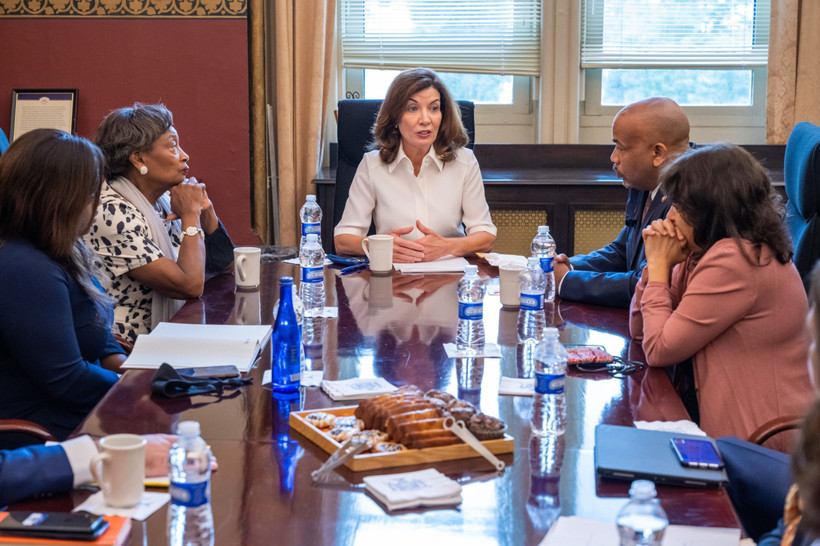Here’s What You Need to Know About the 2022 State Budget
How the three budget proposals from the governor, Assembly and Senate stack up.

Correction: The Assembly's one-house budget did not include any proposal to ban fossil fuel heating systems.

Before Kathy Hochul paused it, the tolling program lost the little labor support it had when the Transport Workers Union withdrew its backing this spring.
More counties are turning to private corporations to run medical care in jails. The companies have deadly track records.
Rebecca Lamorte was let go by her employer in June, prompting the Assembly Speaker to place an upset call to her boss.
No state pursues workers for overpaid unemployment benefits as aggressively as New York. A proposed reform is colliding with New York’s own repayment problem.
A quarter of lawmakers in Albany are landlords. Almost none of them are covered by the most significant tenant protection law in years.
It’s the first step New York has taken to address its housing shortage in years — but tenant groups are fuming and real estate wants more.

